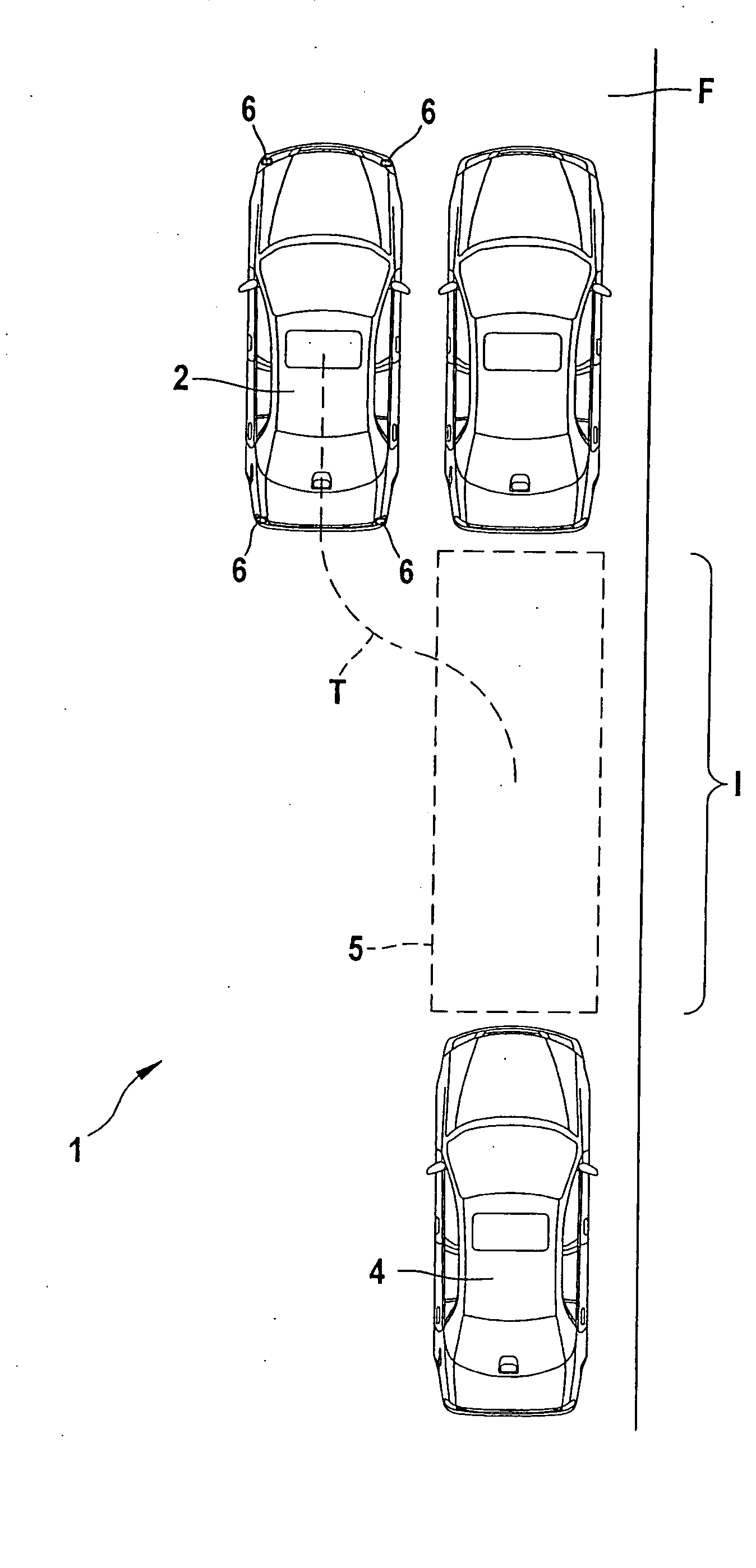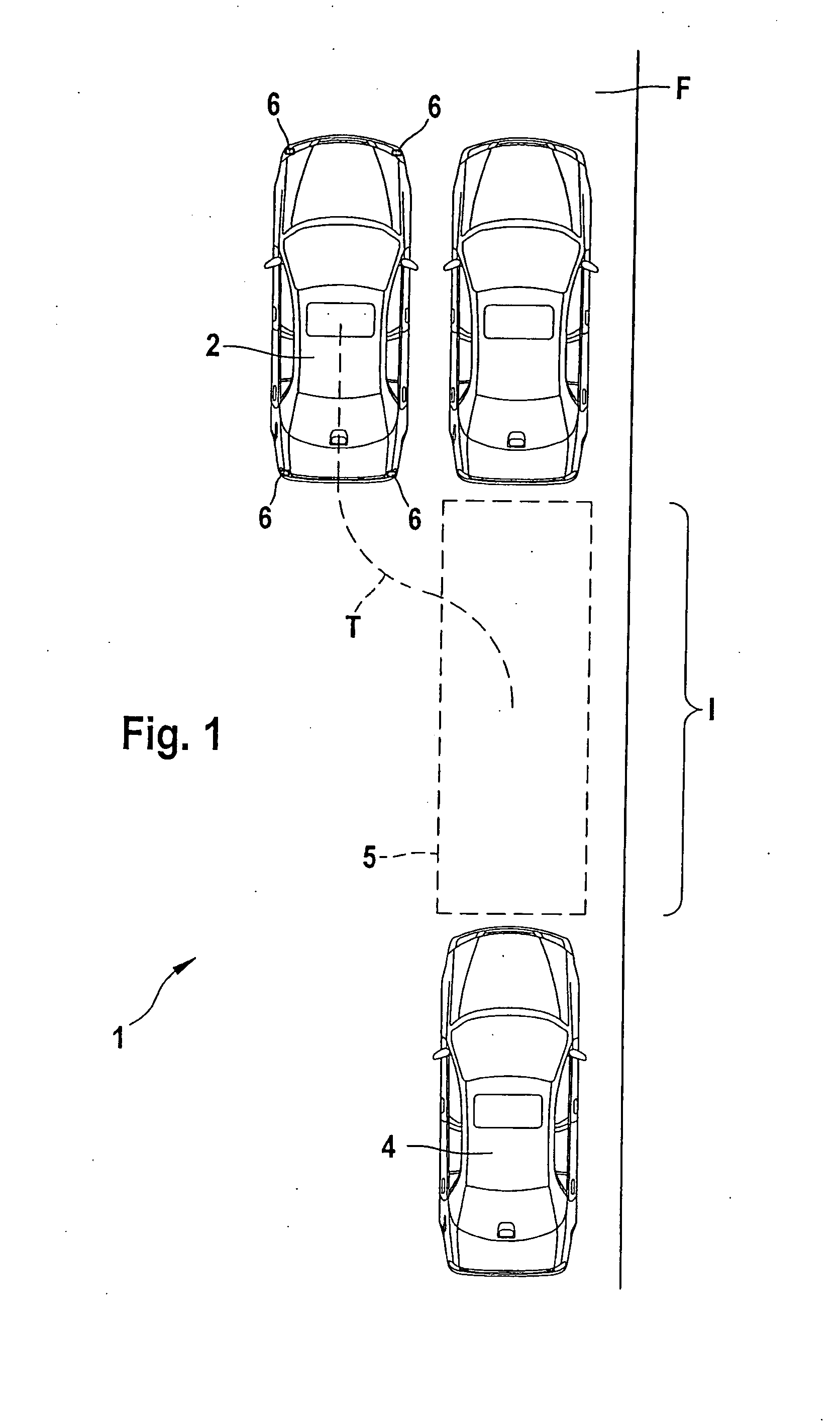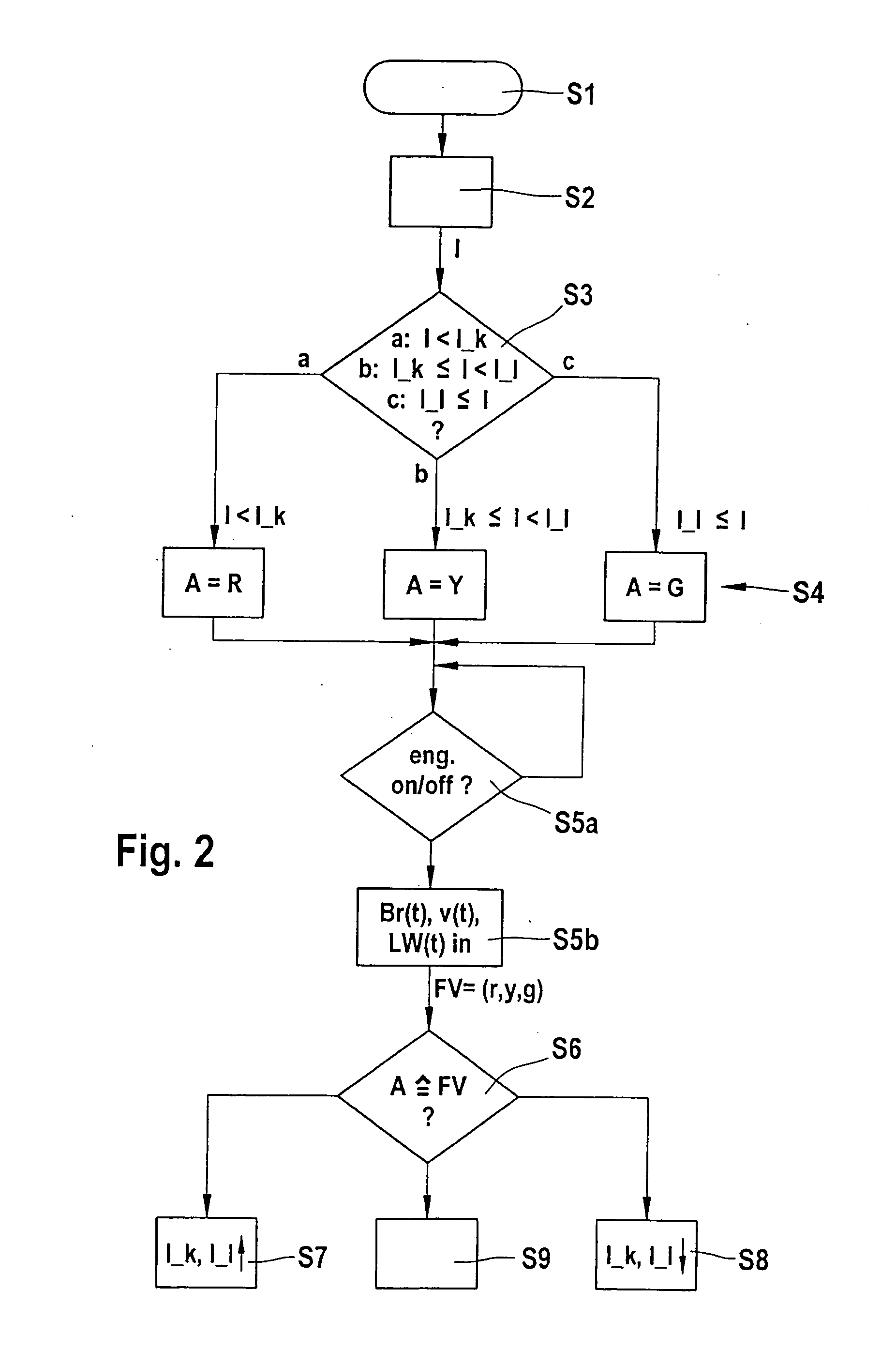Method for Determining a Parking Spot
a parking spot and parking technology, applied in the direction of steering initiation, vessel parts, instruments, etc., can solve the problems of untrained drivers, inability to use parking spots, and the driver's own driving skills not meeting the possibilities evaluated by the system, so as to improve his driving skills
- Summary
- Abstract
- Description
- Claims
- Application Information
AI Technical Summary
Benefits of technology
Problems solved by technology
Method used
Image
Examples
Embodiment Construction
[0013]In traffic situation 1 shown in FIG. 1, a vehicle 2 travels in a lane F alongside parked vehicles 3, 4. According to step S 1 in FIG. 2, a procedure for parking spot measurement (PSM) is started. The driver of vehicle 2 pinpoints a parking spot 5 between vehicles 3, 4. Sensors 6, ultrasound, radar, or stereo camera-based, for example, which may be integrated into the bumpers, for example, determine in step S 2 a length l of parking spot 5 in a manner known per se. The method for parking spot measurement may be carried out at a standstill of vehicle 2 or during travel alongside parking spot 5. Length l and the lateral position of parking spot 5 may possibly subsequently be used for a parking assist method or a park pilot method for determining a trajectory T of vehicle 2 into parking spot 5 under output of steering recommendations and driving direction recommendations, for example.
[0014]In decision step S 3, determined length l is compared to a pre-stored lower limiting value l...
PUM
 Login to View More
Login to View More Abstract
Description
Claims
Application Information
 Login to View More
Login to View More - R&D
- Intellectual Property
- Life Sciences
- Materials
- Tech Scout
- Unparalleled Data Quality
- Higher Quality Content
- 60% Fewer Hallucinations
Browse by: Latest US Patents, China's latest patents, Technical Efficacy Thesaurus, Application Domain, Technology Topic, Popular Technical Reports.
© 2025 PatSnap. All rights reserved.Legal|Privacy policy|Modern Slavery Act Transparency Statement|Sitemap|About US| Contact US: help@patsnap.com



